Discover the delightful world of eki ben, a beloved part of train travel culture in Japan. Ekiben, short for “eki bento” (station bento), are boxed meals sold at train stations, showcasing regional specialties and flavors from across the country. These convenient and tasty meals have a rich history dating back to the late 19th century and have evolved into culinary treasures that reflect local ingredients, traditions, and craftsmanship.
What is Eki ben?
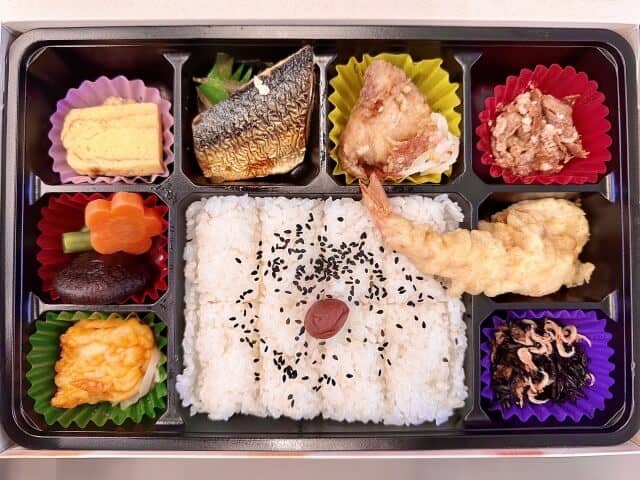
Eki ben (駅å¼) refers to a traditional Japanese boxed meal or bento that is sold at train stations (eki 駅 means station and ben å¼ is short for bento, which means a meal in a box). These are specifically designed to be easily carried and eaten during train journeys. Eki ben are often regional specialties, featuring local ingredients and flavors. They are convenient for travelers to purchase before boarding a train. It typically include a variety of foods such as rice, fish or meat, pickles, vegetables, and sometimes dessert—all neatly arranged within a disposable or reusable box.
Eki ben Origin
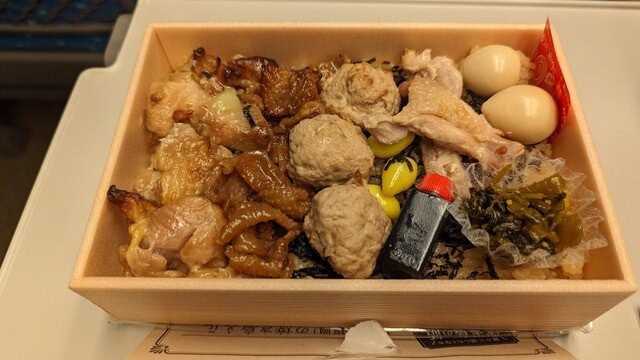
Various theories exist regarding the earliest sale of ekiben in Japan. On July 16, 1885 (Meiji 18), the inn “Shirakiya” was tasked by Japan Railways to sell two rice balls and pickled radish at Utsunomiya Station (now East Japan Railway Tohoku Main Line). This first instance is said to involve the rice balls being wrapped in tree bark. The day of this ekiben’s debut in Utsunomiya, July 16th, is known as the “Ekiben Anniversary,” and many sources reference the Utsunomiya origin theory when discussing this occasion.
Another theory suggests that the first modern-style ekiben, akin to what we know today. It was sold by Maneki Shokuhin at Himeji Station in 1890 (Meiji 23). According to the Nobunkyo (Rural Culture Association), the ekiben sold at Himeji Station in 1889 (Meiji 22) is considered the origin of the classic Makunouchi-style ekiben. It was packaged in a folding box and set the standard for future ekiben forms. This early Himeji ekiben featured a variety of foods such as salt-grilled sea bream, date rolls, grilled kamaboko, dashimaki eggs, simmered soybean konbu, chestnut kinton, simmered burdock, lightly sweetened lily root, slightly simmered Japanese fuki, and pickles from Nara. Alongside white rice topped with pickles, pickled plums, and black sesame seeds.
The charm of eki ben
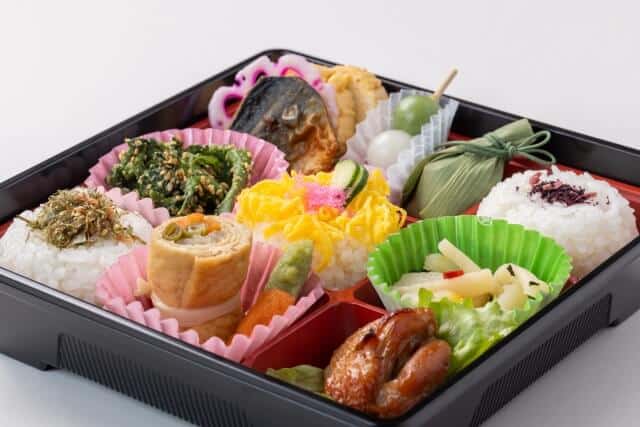
Ekiben, a beloved lunch option for travelers, offers an easy way to savor local specialties while on the go. The mention of ekiben often brings to mind the lively ekiben competitions, where delicious offerings from across Japan are showcased, revealing unique flavors. Some ekiben vendors even offer freshly made samples through demonstration sales, adding to their appeal. Recently, the popularity of ekiben has soared with the opening of large stores that stock ekiben from all regions, making this culinary delight more accessible and familiar. Ekiben has become a hit among foreign tourists seeking to relish authentic Japanese flavors conveniently, indicating that its popularity is poised to grow even further in the future.
Eki ben Tips
Enjoy it with all five senses
When eating an ekiben, engage all your senses for a complete experience. Sharpen your taste, smell, sight, hearing, and touch to fully immerse yourself in the flavors and atmosphere of the meal. Ekiben can even induce synesthesia, where senses like taste and smell intermingle, creating a unique sensory experience that blends colors with flavors and scents.
Eat with the climate
Ekiben reflects the local climate, encompassing factors like geography, vegetation, and cultural traditions. Eating an ekiben is not just about food; it’s about experiencing the essence of a place. Each bite connects you to the local culture and environment, allowing you to feel the nuances of human emotion intertwined with the land’s temperament.
Enjoy virtual reality too
Ekiben’s allure lies in its ability to evoke imagination and transport you to a specific locale through food. The ingredients, cooking methods, seasoning, and presentation all embody the characteristics of the region’s climate and culture. Ekiben enables a journey through food, bringing the essence of a place to you wherever you are. Embrace this “virtual reality” experience and savor the unique qualities of each ekiben.
Train travel should be the main route
While ekiben can evoke a sense of virtual travel, its true essence is tied to train journeys. Purchasing an ekiben during a train trip, unwrapping it while admiring the passing scenery, and savoring it against the backdrop of the train window create an unforgettable experience. Ekiben and train travel are inseparable, enhancing each other to create lasting memories.
Pay attention to the hanging paper
The hanging paper wrapping an ekiben holds significance beyond aesthetics. It symbolizes the essence and purpose of the ekiben. Take note of the hanging paper as it reflects the care and passion put into crafting the meal. The design and messages on the paper can even stimulate your appetite, enhancing the overall enjoyment of the ekiben.
Eki ben and Military bento
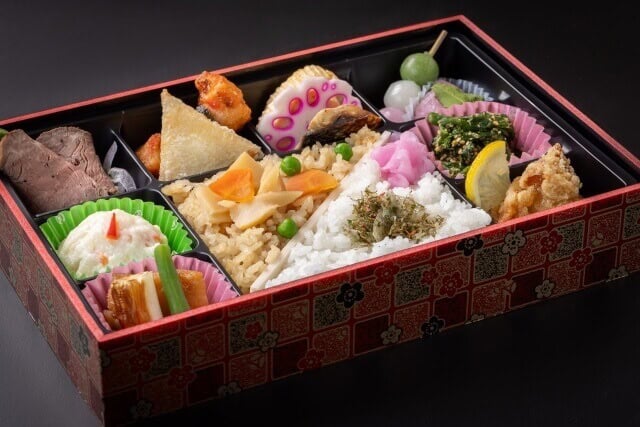
During the period before World War II, the emergence of ekiben businesses across Japan led to their use for train travel meals by Japanese military units during exercises and expeditions. Military units would place last-minute orders known as “gun bento” along their routes to ekiben vendors, who had to prepare large quantities quickly while maintaining confidentiality about transportation plans. Despite the challenges, the demand for these military bentos during regular exercises became a significant income source for ekiben vendors, driving the development and popularity of ekiben. During the war, food shortages led to simpler contents in military bentos. After the war, ekiben continued to be utilized by the Self-Defense Force for train transport, alongside garrison meal arrangements for meals on the move, further cementing the connection between ekiben and military transportation meals.
Eki ben FAQ
- Can you eat ekiben on any train in Japan?
Generally, you can enjoy ekiben on most trains in Japan, particularly on longer-distance routes and shinkansen (bullet trains). Many train stations have dedicated seating areas or benches where passengers can eat their ekiben before boarding. However, it’s important to be considerate of fellow passengers and avoid strong-smelling or messy foods out of respect for others sharing the train car.
- How has the concept of ekiben evolved over time?
Over the years, ekiben has evolved from basic rice balls wrapped in tree bark to elaborate bento boxes featuring a diverse range of regional and seasonal ingredients. This evolution reflects the culinary creativity of Japan, with ekiben now considered a symbol of local pride and culture. Modern ekiben are often beautifully presented and can be found at train stations and specialty shops, department stores, and even online platforms.
Popular Eki ben
Ebi Senryo Chirashi
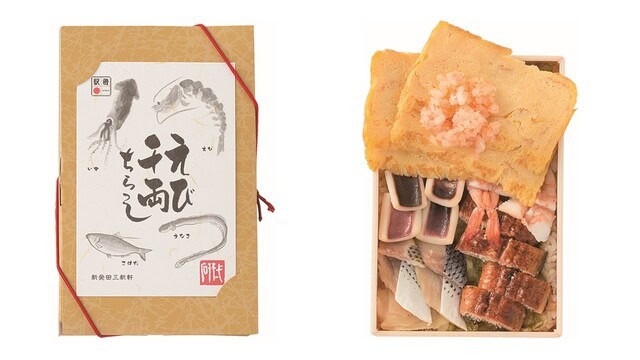
The top-ranked ekiben in the national contest for truly delicious ekiben is Ebisenryo Chirashi from Niigata Prefecture. When you open this ekiben, your attention is drawn to the tamagoyaki filling the box. Underneath, a delicious assortment of eel, kohada (gizzard shad), squid, and shrimp awaits, complemented perfectly by the kelp spread amongst the vinegared rice. The rice itself has a delightful texture due to the inclusion of walnuts. Overall, Ebisenryo Chirashi stands out as an exceptional lunch box in every aspect.
Masunosushi
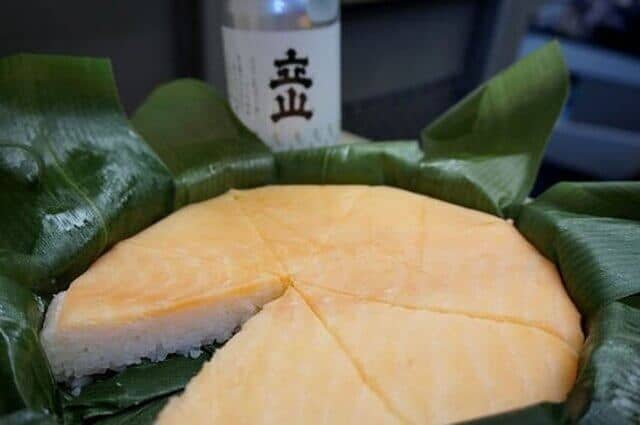
Masuno Sushi ranks as the second most delicious ekiben in Japan and is highly sought after. This often sells out rapidly at competitions nationwide and at the Ekibenya Matsuri in Tokyo Station. It features a delectable combination of fatty trout sourced from Masuno Sushi, flavorful rice from Toyama Prefecture. With bamboo that enhances the aroma, resulting in a captivating flavor profile that appeals to everyone.
Toge no Kamameshi
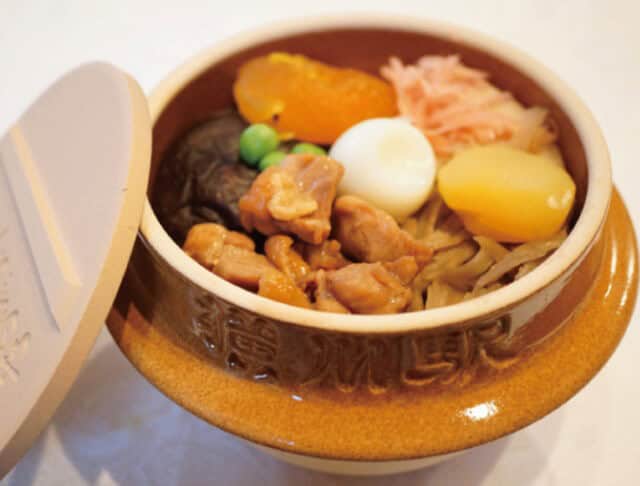
Toge no Kamameshi is an ekiben that has been loved for its delicious taste ever since its creation in 1958. Each carefully crafted topping will soothe your travel fatigue with every bite. Masu. Also, one of the reasons for its popularity is that it uses Mashiko pottery pots.
Kiyoken Shumai bento
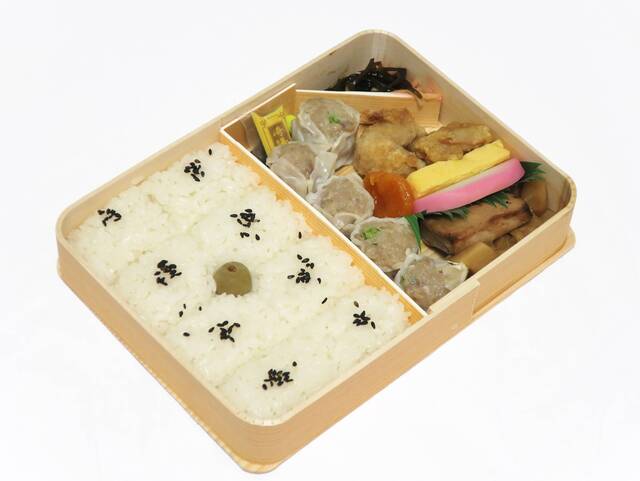
The Kiyoken Shumai bento is a delightful meal featuring traditional shumai and variety of tasty side dishes like tuna teriyaki, fried chicken, tamagoyaki, and kamaboko. The bento box is lined with wood, which helps absorb excess moisture from the rice to prevent it from becoming sticky. When you open the lid, a pleasant pine scent adds to the experience. This enhances the overall enjoyment of this flavorful and well-prepared meal.
Where to buy Eki ben?
JR East Cross Station “Chicken Bentoâ€

A long-selling ekiben that was released in conjunction with the opening of the Shinkansen in 1963. This will celebrate its 60th anniversary in 2024. The combination of tomato-flavored rice and fried chicken is loved by people of all ages. The rice is topped with scrambled eggs and dried tomatoes pickled in oil.
Shinkiniya “Beef Domanchuâ€

A famous ekiben from Yonezawa City, Yamagata Prefecture. Yamagata Prefecture-produced rice “Domannaka” is cooked until fluffy. Topped with sweet and spicy seasoned minced beef and simmered beef slowly simmered in a secret sauce. All side dishes such as boiled sweet potatoes, herring kombu rolls, and tamagoyaki are all handmade.
Shibata Sanshinken “Ebi Senryo Chirashiâ€

When you open the lid, thick fried eggs are spread all over the place, making a great impact! Hidden underneath are kabayaki eel, thinly sliced ​​yellowfin tuna, overnight dried salt squid, and steamed shrimp. It allows you to enjoy a variety of flavors and textures in every bite. The vinegared rice made with rice produced in Niigata is also delicious, making a perfect way to enjoy the taste of Niigata.
Takeaway
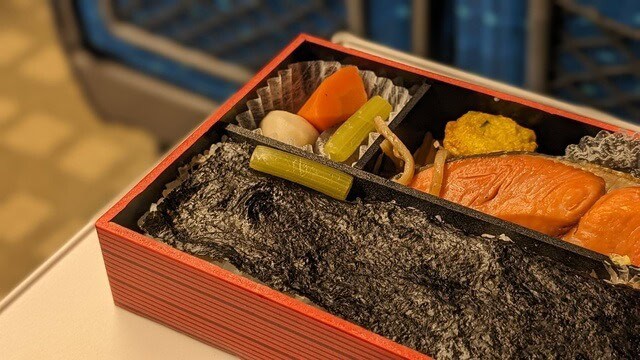
Next time you travel to Japan, don’t miss the opportunity to try ekiben—a delightful way to experience local flavors while on the move. Whether you’re on a bustling train journey or exploring a new destination, ekiben offers a convenient and delicious taste of regional specialties. From sushi and tempura to grilled meats and seasonal treats, there’s an ekiben to suit every palate. Grab one at a train station or specialty shop and savor the unique culinary traditions of Japan on your travels.
You can check some Japanese bento dishes that we know you would like to try too.


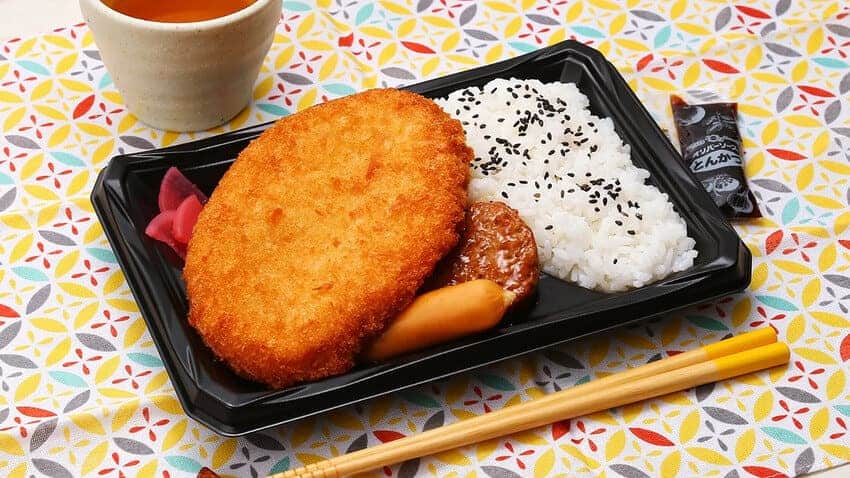



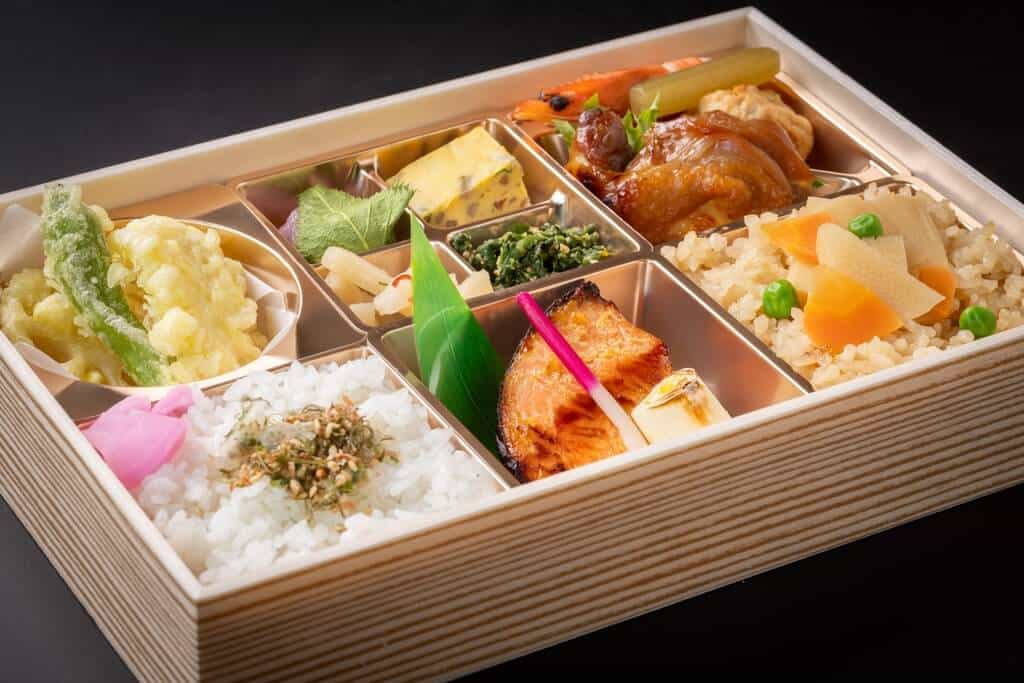
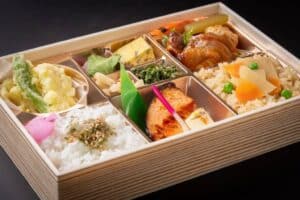

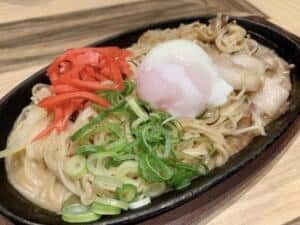
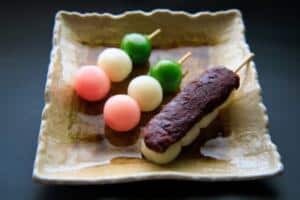
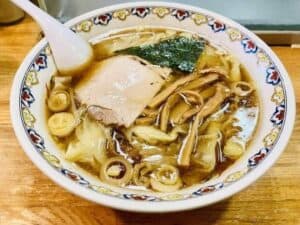
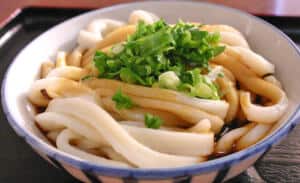
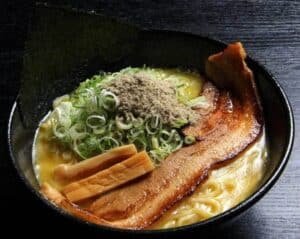
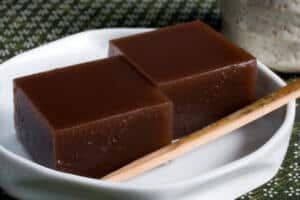

Comments